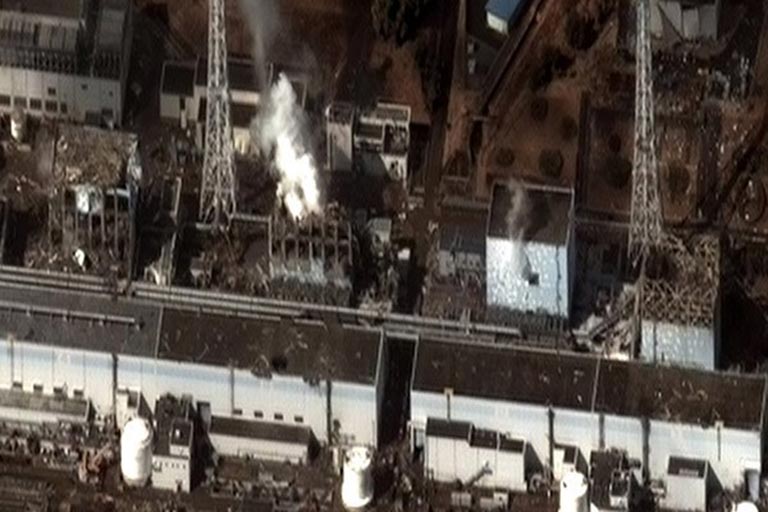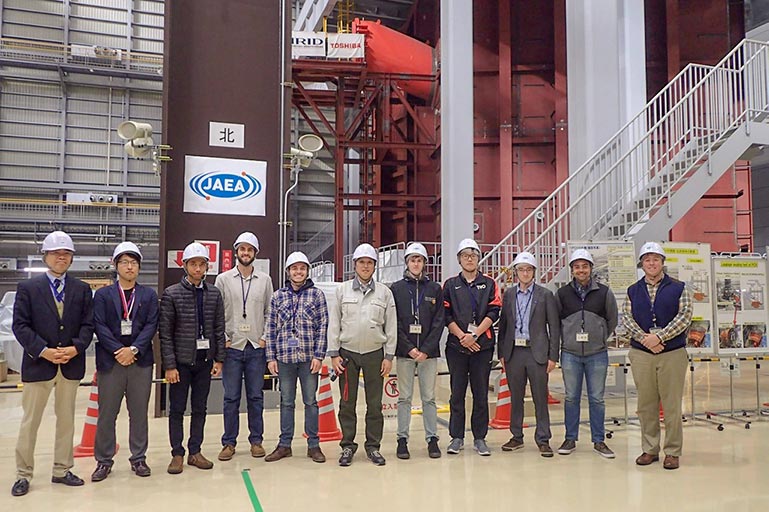Engineering Students Get Firsthand Look at Fukushima Power Plant
Micah Folsom and Logan McNeil, doctoral students in UT’s Tickle College of Engineering, recently took part in one of the first student tours of the Fukushima Daiichi Nuclear Power Plant in Japan, which was crippled by a devastating tsunami in 2011.
That disaster, which left three of the reactors in meltdown status, is considered the worst nuclear accident since the 1986 Chernobyl meltdown in what was then the Soviet Union.
Folsom, from the Department of Nuclear Engineering, and McNeil, from the Department of Mechanical, Aerospace, and Biomedical Engineering, were in Japan to attend a conference about technology used to decommission the reactors, including robots, sensors, and other electronics.
“We heard presentations about site recovery and the remaining technical challenges Japan faces in returning the environment—as close as possible—to its original condition,” said Bill Hamel, a UT professor of mechanical engineering who spoke at the conference.
Folsom and McNeil talked about the “surreal” nature of seeing cities and villages abandoned and frozen in time. They described driving around the destroyed complex and looking up to see the high-water mark left by the tsunami.

In addition to seeing the reactor buildings up close, the students saw the impressive infrastructure built for the cleanup effort, including massive arrays of tanks holding contaminated water.
Students also spent time learning about robotics at Japan Atomic Energy Agency’s (JAEA) Naraha Center for Remote Control Technology Development and at the University of Tokyo, working with students using software to perform 3D scene reconstruction and radiation transport simulations.
Those experiences dovetail with the recent launch of a nuclear decommissioning minor at UT—the first of its kind offered in the US—which uses technology like the kind the students saw in Japan in conjunction with other techniques to help train students how to take nuclear power plants offline and manage radioactive materials left behind, which is basically what is being done at Fukushima.
“The decommissioning effort there will continue for decades, and I hope I have a chance to contribute in the future,” said Folsom. “It was also a very stark reminder of the uphill battle nuclear technology faces in terms of public relations both in Japan and in the US, providing a strong motivator to continue my nuclear work.”
Folsom and McNeil were able to attend thanks to financial support from JAEA and were part of an exclusive group that also included two students each from the University of California at Berkeley, McMaster University in Canada, and the University of Tokyo.
